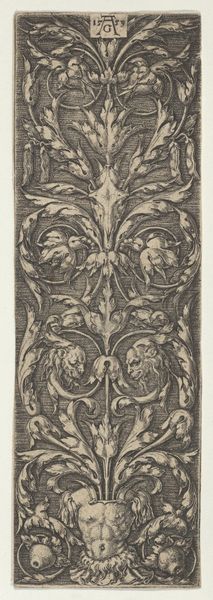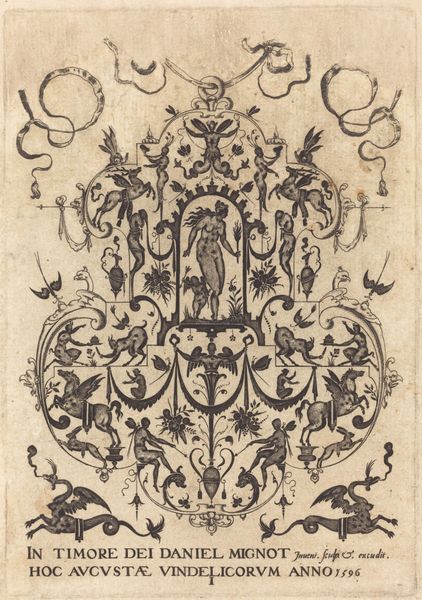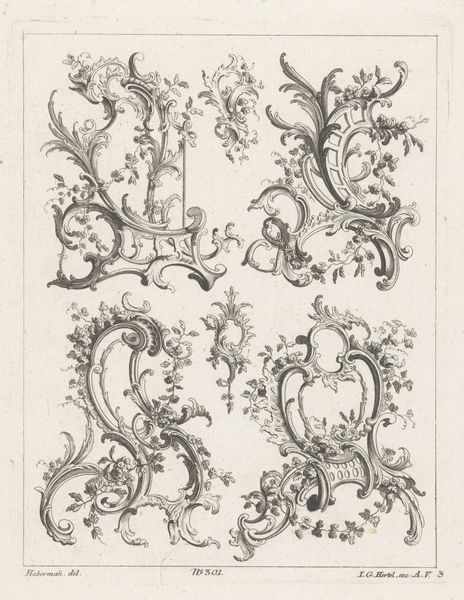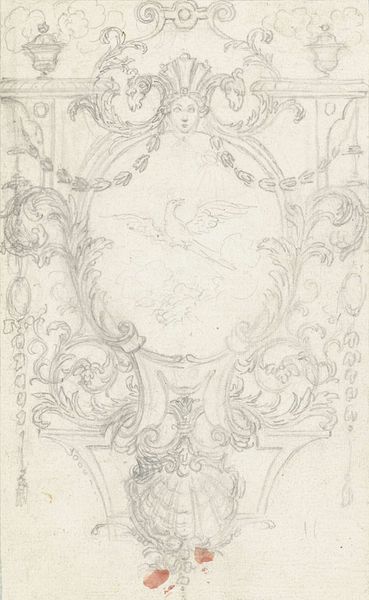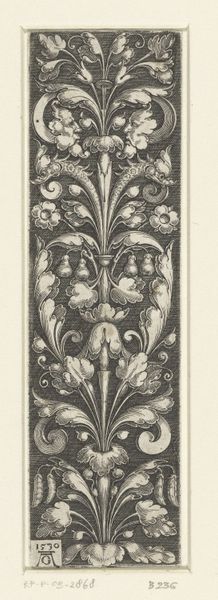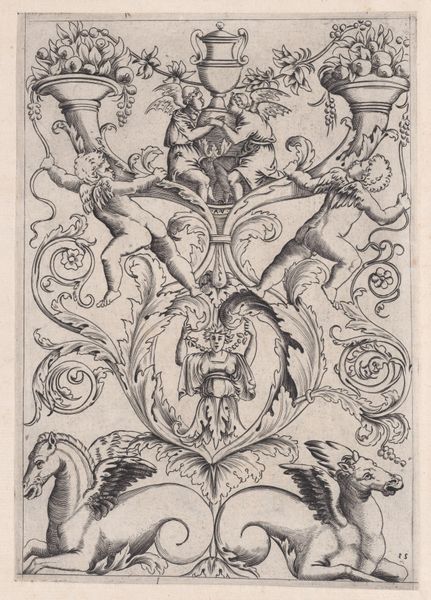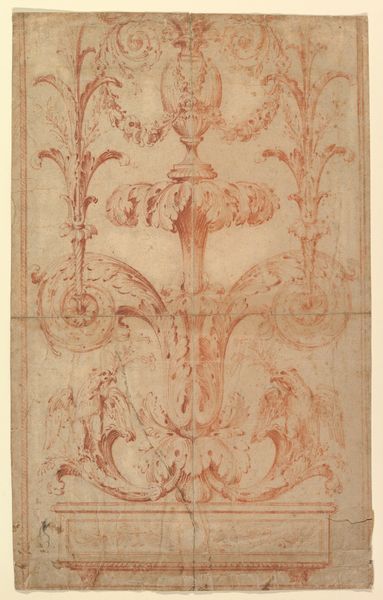
drawing, paper, ink
#
drawing
#
pen drawing
#
mannerism
#
paper
#
ink
#
geometric
Dimensions: height 147 mm, width 47 mm
Copyright: Rijks Museum: Open Domain
Curator: Editor: So, we're looking at "Faun tussen bladornamenten," a pen drawing by Heinrich Aldegrever from 1552. It feels very formal, like something you'd see in a royal garden, but there’s also something slightly unsettling about the face hidden within all the leaves. How do you interpret this work? Curator: This piece, created during the rise of Mannerism, speaks to a world grappling with upheaval. The Reformation had challenged established power structures. So, how does the unsettling feeling you describe tie into that period’s sociopolitical climate? Editor: Well, it is unsettling! The hidden face, maybe? I am not sure I see the link. Curator: Consider how artists of that time subverted traditional ideals of beauty and harmony. Think of Mannerism as a visual language of protest, almost. Aldegrever’s choice of a faun, traditionally linked to unrestrained nature and sexuality, combined with the oppressive ornament… what narrative might that be suggesting? Editor: I guess it feels like the wildness of the faun is being sort of suppressed by all the geometric ornament? It’s a design, not really a celebration of nature itself. Curator: Precisely. It highlights the tension between natural instincts and imposed societal constraints, echoing the broader anxieties of a world in religious and social transition. Does the work feel more relevant in that light? Editor: Definitely. I initially just saw a pretty drawing, but now I see layers of conflict and constraint that really fit the historical context. Curator: And perhaps, the work's endurance through time allows us to interrogate modern issues related to the control, othering and social constraints, and how our historical interpretation shapes future narratives.
Comments
No comments
Be the first to comment and join the conversation on the ultimate creative platform.

